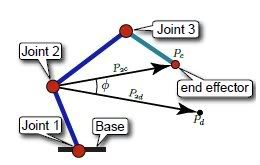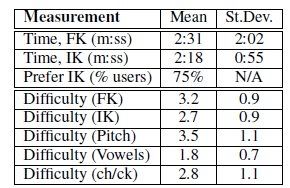Commented on:
Kevin Kwan
Jared Wright
Brad Twitty
Nicholas Harris
J. Chris Elgin
Brian Salato
Devin Mckaskle
John Zachary
Patrick Clay
1. Ethnographyhttp://srl.csdl.tamu.edu/courses/CHI2009/assignments/data/Harmful-Ethnography.pdfIn the paper "Ethnography is considered Harmful", various reasons are brought up against the usage of Ethnography. While the positives of ethnography and its importance was discussed in class, this paper discusses the change in its usage nowadays and its negative effects. I thought the paper presented some decent opinions on how
ethnographies are used today. The author introduces some of the new methods of ethnography and presents arguments that it does not adequately perform the work it was originally intended. For example, the method that studies the place where people work does not "...reveal the 'lived work'." The authors also talk about the affect that new ethnography has on designs. The concerns they raised seem legit in their own view, such as understanding a different aspect of the world that influences design. (i.e. social and cultural aspects) Overall, it seems that they regard the new methods as not covering enough or missing some critical points that are related to design. in that case, I feel that it would be appropriate to add certain traits to the methods to improve their coverage area. By
including the areas of concern, ethnography would no longer be harmful for design, as they would also include a broader area.
2.Usability Evaluation http://srl.csdl.tamu.edu/courses/CHI2009/assignments/data/Harmful-greenberg.pdfOne of the most important factors of design we've studied this semester was usability
evaluation. we've read our shares of books that emphasize on its importance as well as people who has taken advantage of it and succeeded.
however, in this paper, arguments are presented against it and how its "harmful". While they do not deny the value of usability studies, the authors suggest that not all
development situations should be subjected under such an
evaluation. Personally, I think usability
evaluation is a great method for designers and engineers to
gauge their product and its effectiveness. Still, the potential misses that the paper said are possible is worth thinking about. The paper
contemplated on the missed
opportunities that the usability studies could cause for some products when they are tested prematurely. It can't be denied that usability
evaluations are useful, but perhaps it'd be best if they aren't taken in the same context as they are now. They should still perform them, but also evaluate the results a little more carefully and considered the possibilities and not let everything be dictated by the outcomes.
3.Human-Centered Designshttp://srl.csdl.tamu.edu/courses/CHI2009/assignments/data/Harmful-norman.pdfDon Norman! And i thought I was done with him after the last book, but alas, the class has brought us together again. In this paper, Don Norman talks about the dominance of human-
centered designs, and its harmful effects on design overall. Norman offers an alternative, Activity-Centered design, and reasons why. After reading
through this paper, I must say that his suggest method have some merits to them. He presents
some examples such as writing tools and music instruments and how their designed for their
specific activity and people were able to adapt to them and still perform great feats. While that may be true for certain things, I think that the rule is not universal. For some
activities, people are willing to make the effort to adapt for whatever satisfaction or reward they gain. In some activities that are trivial, users would not be motivated to adapt for it.Norman argues that while
HCD has its benefits, it also some some heavy weighing drawbacks. One of which is that a certain group of users might tend to make changes that benefit them only and not really involve other people. Overall, I thought it was an interesting read, but once again, I would e
valuate its usage on a case by case basis. While its true that
HCD does indeed have some things it needs to address, it is not necessarily
deficient for certain objects while
ACD also has its advantages for some things.
 source:http://en.wikipedia.org/wiki/Fitt%27s_law
source:http://en.wikipedia.org/wiki/Fitt%27s_law







